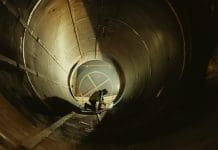Sustainability, energy efficiency and wellbeing indicate the quality of a building. Is now the time to consider the return on investment of implementing the Well Building Standard? Joanna Peacock, Lead Sustainability Consultant at Eight Associates, takes a look
Wellbeing, as much as energy efficiency and carbon reduction, is becoming a key criteria against which a building’s quality is judged. We spend over 90% of our lives in and around buildings, where the concepts of sustainability and environmental impact are widely understood and measured. Now, consideration of buildings’ impact on occupants’ wellbeing – and productivity and absenteeism levels – is advancing. This is not surprising, given 90% of operating expenses typically go to staff costs and 90% of people say their attitude to work is adversely affected by the quality of their workplace environment.
Launched in 2014, the Well Building Standard is a rapidly growing standard that assesses a building’s ‘healthy’ attributes, putting “health and wellness at the centre of design decisions, in an effort to create more productive offices for staff”. The Well Building Standard has an increased focus on the post-occupancy evaluation and ‘softer’ issues beyond typical performance goals as certification depends on the building meeting all the performance metrics in use. It also measures seven elements that impact on occupant health: air, water, nourishment, light, fitness, comfort and mind.
The Well Building Standard promotes clean air and minimising sources of indoor air pollution, safe and clean water through the implementation of proper filtration (in recognition of how quickly dehydration is detrimental to human performance), and the availability of fresh, nutritious foods and encouraging healthy eating habits.
The standard provides illumination guidelines that minimise disruption to the body’s circadian rhythms and hence sleep patterns, and it promotes fitness through the integration of physical activity into everyday life by providing opportunities for physical activity, such as moving away from prolonged periods of sitting at desks and taking the stairs rather than the lift.
The mind element incorporates optimising design, technology and crowding, noise, indoor air quality and light for the best emotional health.
Finally, the Well Building Standard promotes comfort, an element spanning thermal, acoustic, ergonomic and olfactory comfort to optimise the indoor environment, and hence wellbeing and productivity.
What might this look like in practice? Measures might typically include improved access to daylight, better acoustical design to help improve concentration and increased ventilation to help employees be more comfortable year-round. In addition, vending machines are replaced with access to healthy snacks, biophilic design is considered to bring nature indoors and sit/stand desks are introduced to help employees achieve better comfort.
There is some scepticism of the measurement of, and correlation between, productivity and wellbeing. Yet it is beyond doubt that lighting, air quality, noise, thermal comfort, design layout and even access to nature have a huge impact on how people feel in the workplace. Post-occupancy surveys provide subjective measurements, while technology, such as on a smartphone or inexpensive IEQ monitor, is readily available and delivers objective measurements (such as daylight, noise levels and air quality).
Is the standard worth the investment? The evidence from the first Well Building Standard-certified office projects in the United States suggests it is. Costs have varied considerably, with certified fit-outs completed for between $10.76 and $43.04 per square metre. The biggest expenses were in acoustics (reducing noise in an open office), enhanced HVAC filtration and zone control (for cleaner indoor air).
Advocates say that the benefits of the Well Building Standard are highlighted by improved absenteeism and higher productivity figures. This is important considering the annual absenteeism rate in the US is 3% per employee in the private sector, which costs employers $2,074 per employee, per year.
Research has shown that offices with good ventilation and air quality can improve cognitive function as much as 101%. Other recent studies have found that improving thermal comfort and access to daylight can significantly increase worker satisfaction, and hence productivity. Even while reliably quantifying human benefits of buildings becomes standardised, for most businesses a 1% improvement in productivity is worth far more to the bottom line than $10.76 per square metre, per year.
The Well Building Standard also aligns with BREEAM certification. The International WELL Building Institute (IWBI) and BRE have published guidance on where the same evidence can be used to make it more efficient for clients and project teams to pursue dual certification, with the aim of saving time and costs. So far, there is no indication that it alters the timeline of projects. Similar guidance has also been published for teams seeking Leadership in Energy and Environmental Design (LEED) certification.
It will take time to be able to undertake a full analysis of the impact of “WELL-ready” buildings on increased rents or decreased vacancy rates. Yet building owners who want to attract Class A tenants should consider the standard now, as employers look to differentiate themselves by providing a healthier workplace for their employees to reduce employee turnover or improve recruitment of talent. The Well Building Standard is leading a move towards a more comprehensive assessment approach beyond the established sustainability assessment criteria. It involves optimising a complex set of factors. For example, achieving thermal comfort alone involves the careful balancing of thermal mass, glazing, shading, ventilation, zoning and building user control. The initial indications are the returns justify the costs and developers need to be prepared to respond to this growing market.
Joanna Peacock
Lead Sustainability Consultant
Eight Associates
Tel: +44 (0)20 7043 0418
Twitter: @eightassociates














